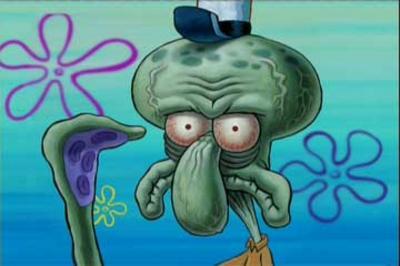I didn't realize that a lot of animated cartoons came from the
classic comic strip a person would read in the paper. When I was a kid i
loved the peanuts cartoon, pop-eye, and little nemo cartoons shown on
tv and vhs. I like Lucy's character in the peanuts series. In the comic
strip it seems more apparent that Lucy has a thing for Charlie Brown.
However, in the cartoon series she is more mean to him, so no one will
know that she likes him. It is funny how kids use reverse physiology in a
romantic sense maybe because they are a stranger to romantic feelings
and they do not know how to react. Maybe they are even afraid someone
will make fun of them for liking someone before puberty hits and its
cool to have a mate. This is the classic case with a lot of kid
characters such as Helga on Hey Arnold!, a classic 90s Nickelodeon
cartoon. She is mean and hateful to his face, but ends up stalking him
and making poetry about how in love she is with him. I see similarities
between the two cartoon couples. Like Helga, Lucy is bossy and
aggressive, where as Charlie Brown, like Arnold, is calm, and patient
and willing to listen. They balance each other out making them a perfect
match. The Peanuts have a variety that many different kids can relate
to. Pig pen, "the kid who doesn't bathe"; Linus, "the kid with
attachment issues", he never let go of his blanket; Sassy, "the annoying
little sister who has a crush on your best friend", etc. I find it
funny that they always make fun of Peppermint Patty as being a lesbian
in multiple parodies who is usually in a relationship with her nerdy
best friend Marcie. She is of course made fun of as the lesbian because
she is a tom boy. However, they never make fun of a character being a
boy and also gay, because either, it is not apparent, or as a society it
is inappropriate to be a gay man. However, i think that Schroeder is
they gay boy character. He is the reserved artsy type that doesn't
usually get involved. Lucy is openly attracted to him because is the
cool guy, and mysterious which attracts her. She won't be criticized for
liking him. However, Schroeder ignores her, which makes Lucy want his
attention even more. One more observation can't go without notice is,
like Archie, there are no minorities.
I did find some
minorities in the Nemo comics how ever. Of course though they were
depicted as servants because of the time period they were made. Black
people were depicted as enjoying there oppressed position. Because,
having rebellious black people in the comics would be too inappropriate
for publication at the time. However, I can understand how children
would like the comics of Little Nemo in slumberland because it is
playful,circus like, and fantastic. My favorite scene would probably
have to be the walking bed. There also is another way black people are
represented in this comic, as savages. The Imp is a character that plays
tricks on people and is uncivilized, he is a racial caricature of
native Africans. Black people are represented as either servants, or
savages but never quite so civilized, or people of mainstream society.
Other companions in Nemo's world is flip. Who is a clown that is Nemo's
nemesis and then becomes his friend. It is not indicated whether or not
flip is a small man or a child even though he does smoke cigars and
hints at a balding hairline. I think his character is suppose to
represent a fool, a man who never grew up; possibly even being a
disobedient kid. There is also a princess in the comic which Nemo denies
an attraction to. And there is her father who is king Morpheus, who is
the god of dreams in greek mythology. There is a lot of mythology in
this comic strip from ancient to religions and also focus towards
biblical stories and Christianity. There is a nightmare realm with a
demon as its ruler which represents the devil and evil, and king
Morpheus who be god, and slumberland would be heaven because it is place
of safety and fun, child-like and without sin. There is also a hint at
the story of Pandora where Zeus tells her not to open the box and she
does anyway. King Morpheus gives Nemo the key to the city that will
unlock any door. But, he must never unlock the door with the symbol of
the key on it. Flip ends up convincing Nemo to open the door and he lets
evil or the nightmare back into the world. This is also an
interpretation of Adam and Eve. Eve being Flip, and Nemo being Adam.
Lastly,
Krazy Kat is an interesting comic strip where a mouse keeps hitting a
cat with a brick. It looks like a retro tom and Jerry cartoon, but it is
the mouse that is hunting the cat which is ironically funny. The
slapstick in the comic gives inspiration to later cartoons such as
Looney Toons. The in these cartoons one animal is always trying to hunt
another, like Elmer Fudd is trying to hunt Bugs Bunny and Bugs Bunny is
trying to convince Elmer to hunt Daffy Duck instead. Or the road runner
vs. wild e. coyote. Also, i can see where Matt Groening, got his idea
for the Simpsons cartoon. Lisa and Bart watch the show Itchy and Skraty
where a mouse hunts a cat ironically. However, it goes beyond slap stick
humor, and shows shows the mouse chain sawing the cat's body inhalf and
his blood and guts shoot every which way. I think that Matt Groening
was intentionally trying to parodies the violence in cartoons.



